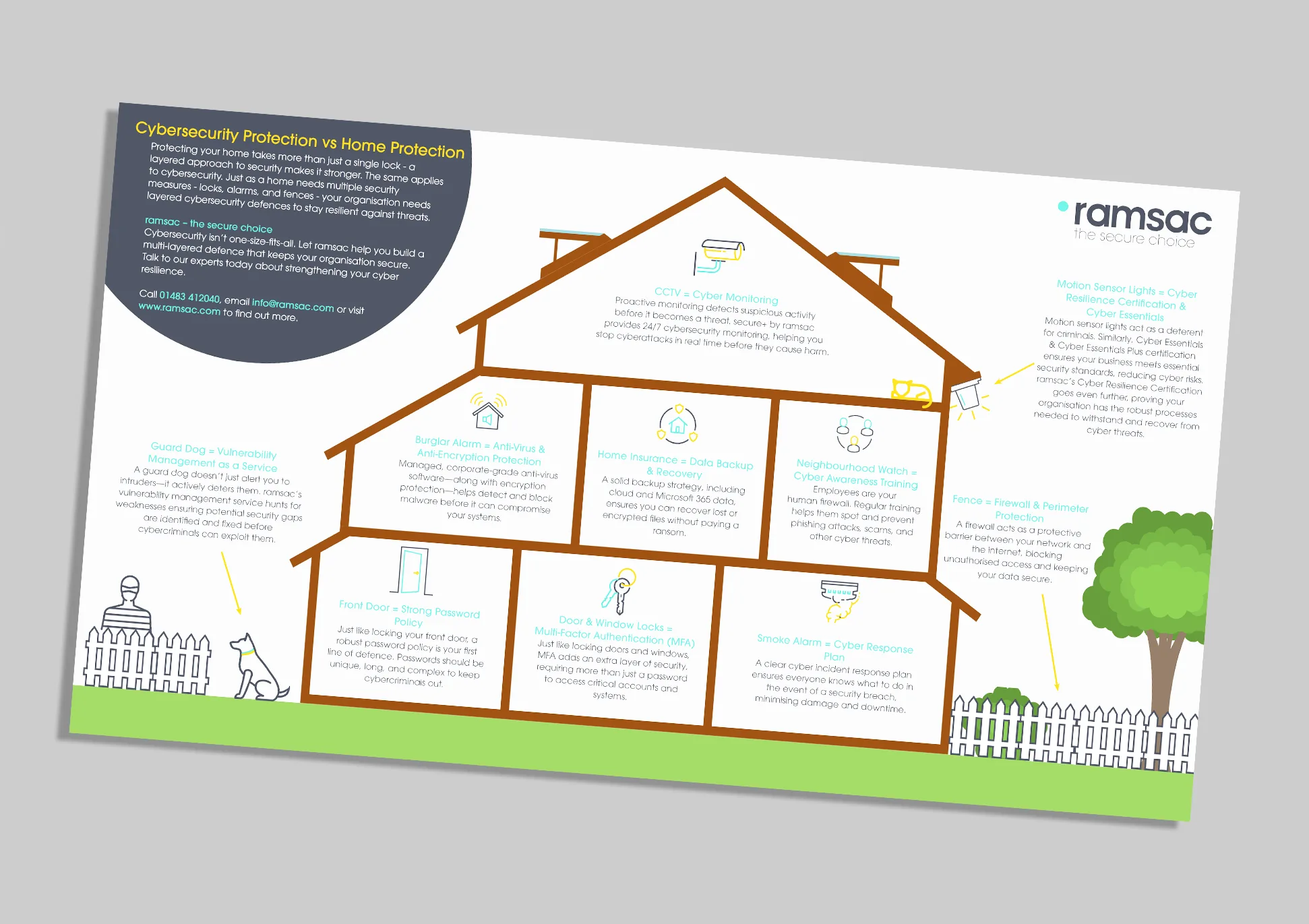How cybercrime costs the UK economy nearly £27B every year

Posted on August 2, 2022 by Dan May
Keeping connected has been a major focus for UK businesses over the last few years. New technologies have helped us all – as colleagues and friends – remain closer than before. But, with inflating cybercrime numbers now costing the UK (and global) economy an alarming yearly sum, should you rethink that view that a breach leads to little more than information and data vulnerability?
But understanding the impact of the costs of cybercrime depends on how you measure it. As one journalist noticed in 2020, if you measure cybercrime as a country, it would be “the world’s third-largest economy after the U.S. and China”. That’s because its predicted costs alone by 2025, in terms of understanding its impact on our global economy, are likely to scale up to $10.5 trillion annually. That number is staggering, but it’s not that helpful if you’re a UK business and you’re unsure about how cybercrime could be spending your pounds without you even knowing.
How much does cybercrime cost the UK economy?
The interconnectedness of people across the UK has been largely enabled by the everyday devices we use to communicate and stay connected. Commercial and personal computing, regular broadband access, and other ‘smart’ devices, represents but a few of the ways that this happens. It’s significant enough that, in the UK’s notorious ‘The Cost of Cyber Crime’ analysis, it was observed how:
“Our society is now almost entirely dependent on the continued availability, accuracy and confidentiality of its Information and Communications Technology (ICT).”
Did you know, for example, that every day more than 333 billion emails are sent and received from our devices worldwide? Furthermore, there’s a total of 84% of businesses using broadband in the UK, from Scotland to Lincolnshire. Even e-Commerce in the UK, which is considered the “most advanced” in Europe, has been steadily growing. According to recent figures, the nation’s e-Commerce revenue for 2019 reached an impressive £693 billion.
Nowadays, the risk of cybercrime to your business is so relevant that it’s not a question of if you will be targeted and breached, but when you will be targeted and breached. Perhaps even more important is the question of how your business will react.
In the same report, it’s estimated that the costs of cybercrime to the UK is £27 billion a year. The wide ‘blast radius’ of cybercrime could impact your business, jeopardising its data and costing you thousands annually. In fact, according to CyberEdge’s 2021 Cyberthreat Défense Report (CDR) a significant 86% of UK organisations had experienced some variety of cyber-attack.
Has cybercrime become a part of your business overheads?
After 2020, as many UK businesses have been focussing on recovery after national lockdowns, the cost of cybercrime is only growing year-on-year. Sophos’ State of Ransomware 2021 report discovered, for example, that the average ransom payment totalled $170,404 (ransom payments were varied depending on the size of an organisation and industry). Even more alarming, 57% of businesses that were victims to ransomware paid their ransoms last year, which has only encouraged this type of crime.
Cybercrime costs are made up of lost or stolen revenue figures, intellectual property loss, and tech spending. But it’s increasingly hard to calculate the averages of these costs because cybercrime can lead to additional challenges for a business, whether that’s downtime, or reputational damage. For the average UK business, cybercrime has become as inevitable as tax, a certainty that it will cost your business.
What is the most expensive type of cyber-attack?
According to Accenture’s Cost of Cybercrime, malware is the most expensive type of cybercrime in the UK, which costs 15% more than previous years. But the evolution of cybercrime means that costs stack up quickly for businesses. Whether that’s upfront ransom, recovery costs, or managing the aftermath of a breach, cybercrime is challenging to pinpoint.
In the same report, it’s noticed how information theft is the most costly and common consequence of cybercrime in the UK. Whilst it’s not the only target of a breach, data is most often the goal of cybercrime. But that’s not to suggest that data theft is the outcome – it can be that data is destroyed or corrupted, leading to a new generation of questionable data integrity.
The bottom line, when it comes to cybercrime in the UK, is that attacks are more common, increasingly complex, and are associated with higher costs.
Looking for guidance when it comes to cybercrime?
Speak to our cybersecurity specialists today for help when it comes to how your business can boost its protection, including cybersecurity awareness training opportunities.
Get in touch today.







